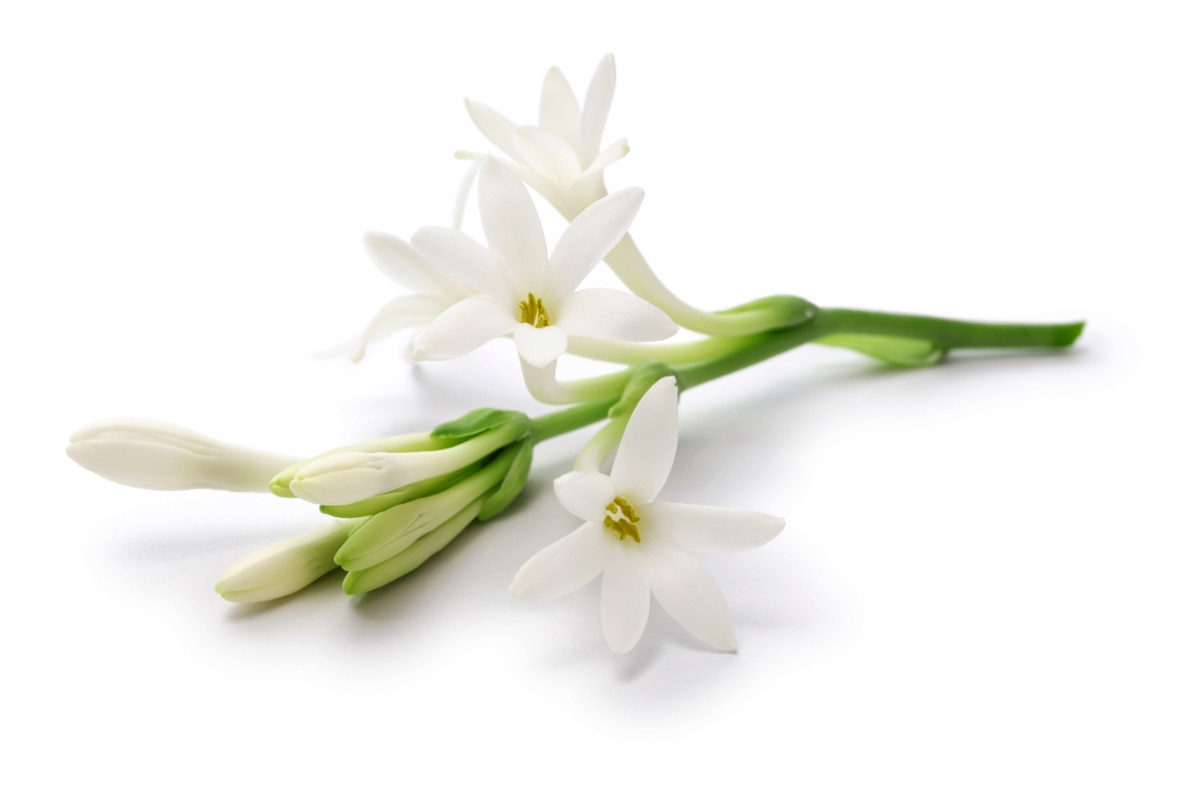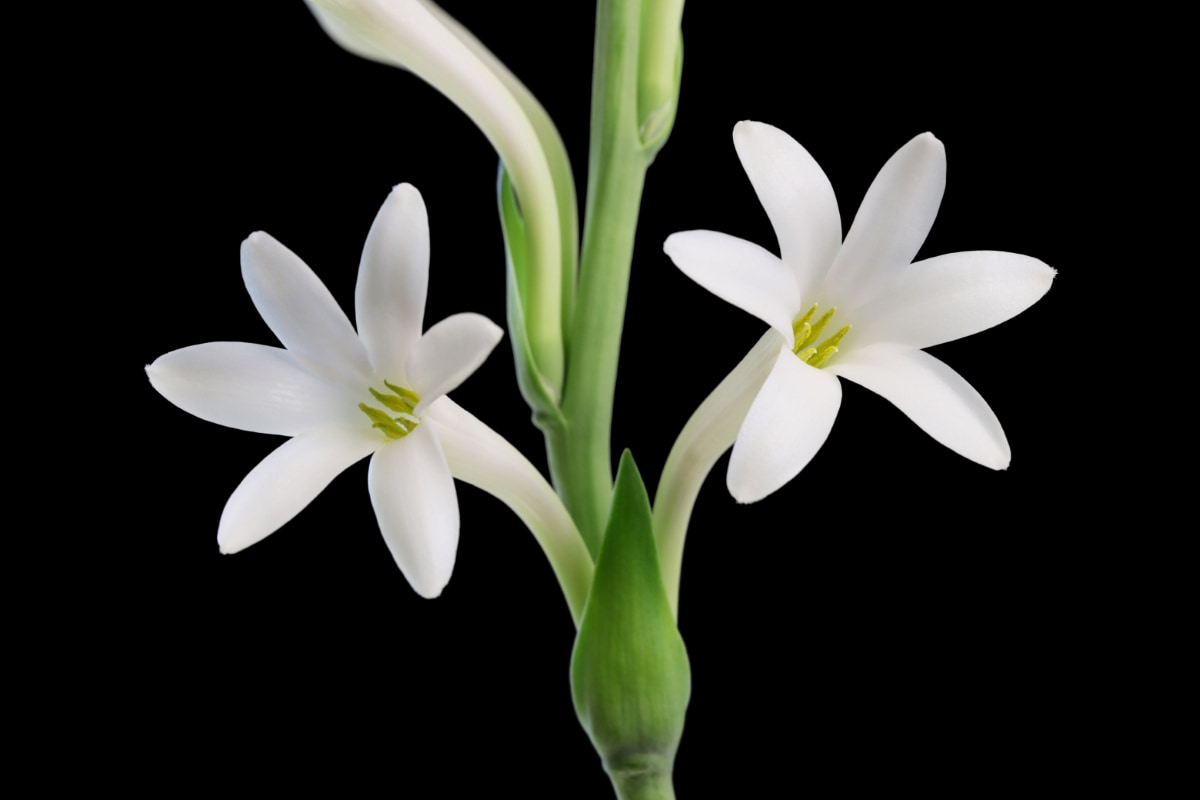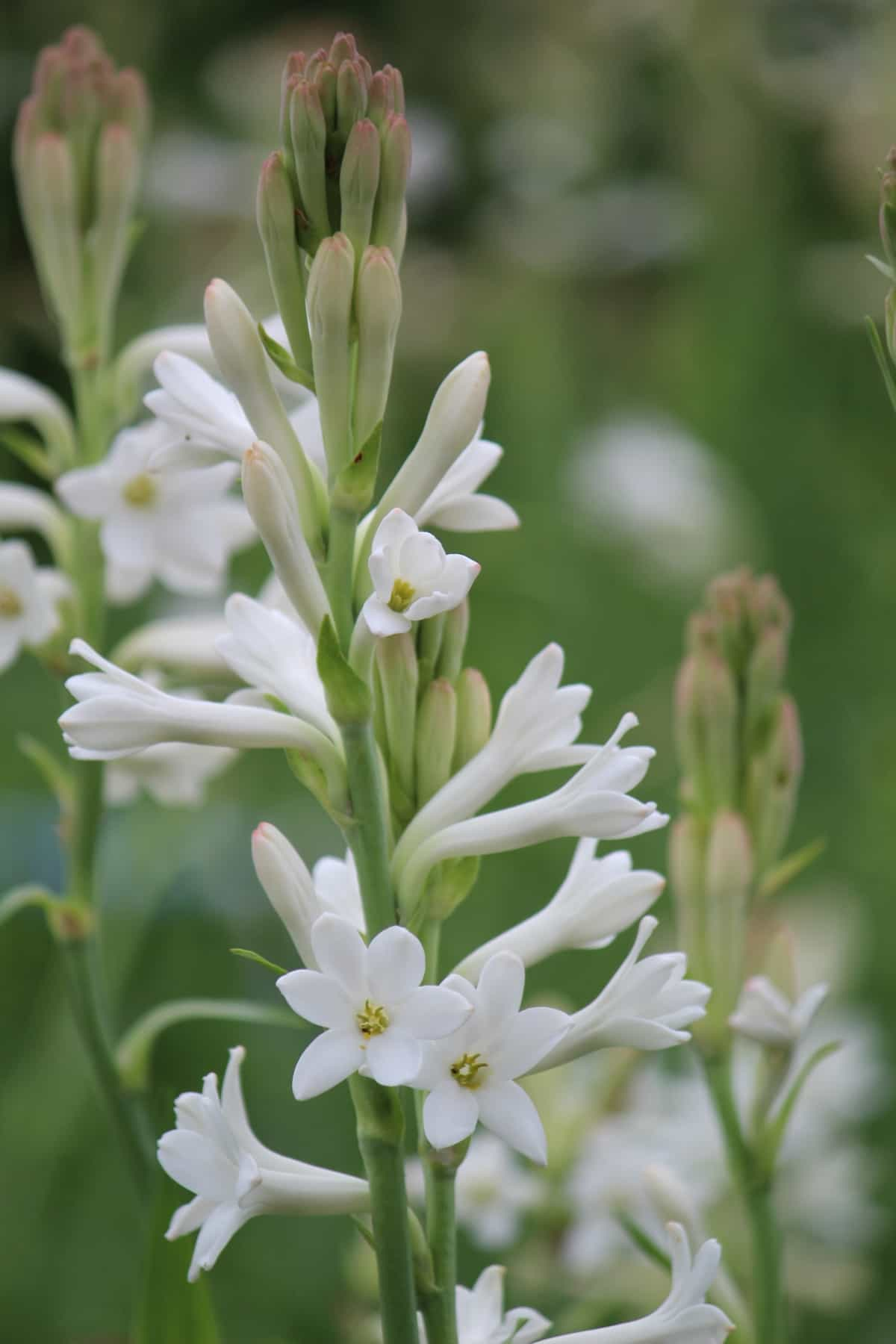Rajnigandha (Polianthes tuberosa) flowers are a fascinating and enchanting addition to any garden. With their stunning white blooms and captivating fragrance, these flowers have been revered for centuries in various cultures around the world. These are also called Tuberose. Cultivating Rajnigandha flowers adds visual appeal to any landscape or flower arrangement.

Rajnigandha Flowers
The Botanical and Geographical Origins of Rajnigandha Flowers
Rajnigandha flowers have an intriguing origin story deeply rooted in botany and geography. These stunning blossoms can be traced back to their native lands in Mexico and Central America. Today, Rajnigandha flowers are cultivated worldwide, thriving in warm climates with well-drained soil. These exquisite flowers have captured the hearts of people across cultures for centuries.
Their presence is often associated with love, purity, and sensuality. In many traditions, Rajnigandha flowers play significant roles in weddings, religious ceremonies, and cultural celebrations. Beyond their aesthetic value and symbolic meanings, Rajnigandha flowers also possess medicinal properties that have been utilized in traditional medicine systems like Ayurveda. Extracts from these blooms are believed to alleviate stress-related ailments while promoting relaxation and mental well-being.
Cultural Significance and Symbolism of Rajnigandha Flowers
Rajnigandha flowers hold a special place in various cultures around the world, symbolizing different meanings and emotions. In Indian culture, these fragrant blooms are often associated with love, purity, and devotion. They are used in religious ceremonies and festivals as offerings to deities.
In Hindu mythology, Rajnigandha is believed to be the sacred flower of Lord Shiva. It is said that its fragrance pleases him greatly. The delicate white petals represent purity, while the intoxicating scent signifies divine beauty. The significance of Rajnigandha extends beyond weddings and religious ceremonies. Rajnigandha flowers carry deep cultural significance and symbolism across different traditions.
Rajnigandha Flowers in Traditional Medicine and Ayurveda
Rajnigandha flowers have long been valued not only for their beauty and fragrance but also for their medicinal properties. In traditional medicine and Ayurveda, these flowers are highly regarded for their therapeutic benefits. According to Ayurvedic principles, Rajnigandha flowers possess cooling properties that can help balance the body’s energies.
They are believed to have a calming effect on the mind and nervous system, making them useful in treating conditions like anxiety, stress, and insomnia. In addition to promoting relaxation, Rajnigandha flowers are also known for their digestive properties. In Ayurveda, Rajnigandha is considered a rejuvenating herb that nourishes both the body and mind. It is often used in herbal formulations aimed at enhancing vitality and longevity.
The Growth and Cultivation of Rajnigandha Flowers
The cultivation of Rajnigandha flowers also holds economic importance for many farmers who rely on its production as a source of income. This flowering crop provides livelihood opportunities while contributing to the floral industry’s growth. To start growing Rajnigandha flowers, you will need a sunny spot in your garden or a pot if you prefer to grow these flowers indoors. When planting Rajnigandha bulbs, ensure that the soil is well-drained and rich in organic matter.
It’s best to plant them in early spring or late winter when the temperatures are still cool. Dig holes about 6 inches deep and then place the Rajnigandha bulbs with their pointed ends facing upwards. Space each bulb at least 4-6 inches apart. Once planted, water the bulbs thoroughly and keep the soil evenly moist throughout their growth period. Regular watering is essential for these delicate flowers to thrive.
In case you missed it: 10 Best August Flowers to Plant to Brighten Up Your Garden Yard

Fertilize with a balanced flower fertilizer every few weeks during the growing season. Watch for plant pests like aphids or spider mites and take suitable measures if necessary. In about 90-120 days from planting, your efforts will be rewarded with stunning clusters of fragrant white blooms adorning your garden or indoor space. Remember to cut off faded flowers regularly to encourage more blooming.
Understanding the Different Varieties of Rajnigandha Flowers
Some of the popular varieties of Rajnigandha are Single Mexican, Double Pearl, The Pearl, Excelsior, and Calcutta Single. Single Mexican Rajnigandha has an elegant simplicity. With a single row of beautifully arranged petals, it exudes an understated grace that is hard to resist. Its fragrance is delicate yet captivating, making it a popular choice for floral arrangements. The Double Pearl variety boasts multiple layers of ethereal white petals that create an exquisite bloom reminiscent of pristine pearls.
Its fragrance fills the air with a sweet and intoxicating scent that can transport you to another world. The Pearl Excelsior Rajnigandha variety stands out from the rest. Each petal unfurls gracefully like silk in shades ranging from pure white to soft ivory. Its mesmerizing fragrance adds an extra touch of allure to any floral display. Calcutta Single Rajnigandha is a unique variety celebrated for its vibrant pink hue and velvety texture. It emanates a delightful aroma that instantly uplifts your spirits and creates a joyful ambiance wherever it flourishes.
Rajnigandha Flowers in Art, Literature, and Mythology
Rajnigandha flowers have captivated artists, writers, and storytellers for centuries, finding their way into various forms of art, literature, and mythology. These exquisite blooms have inspired countless poets to weave their beauty into verses that evoke emotions and paint vivid imagery. In Indian literature, Rajnigandha flowers often symbolize love, purity, and devotion. Artists across different cultures have also found inspiration in Rajnigandha flowers. Painters have captured their ethereal beauty on canvas with delicate brushstrokes that mimic intricate petals and graceful curves.
The Fragrance and Essential Oils of Rajnigandha Flowers
The fragrance of Rajnigandha flowers has been cherished for centuries and has found its way into various forms, including essential oils. These oils are extracted from the flower petals through a meticulous process, capturing the essence of their aroma. Rajnigandha essential oil carries with it all the wonderful qualities of the flower’s fragrance. It can be used in aromatherapy to create a soothing atmosphere, helping to alleviate stress and anxiety.
In case you missed it: 10 Best Night Flowering Plants: Ideal Ones to Keep at Home

The scent also has aphrodisiac properties, making it a popular choice in romantic settings. In addition to its aromatic benefits, Rajnigandha essential oil also holds therapeutic value. It is believed to have anti-inflammatory properties and may aid in relieving muscle pain and tension when applied topically. Whether enjoyed in its natural form or as an essential oil, the fragrance of Rajnigandha flowers brings joy, serenity, and beauty into our lives.
Rajnigandha Flowers in Modern Floristry and Perfumery
In the world of floristry, Rajnigandha flowers are highly sought after for their appearance and enchanting scent. These blooms add a touch of sophistication to any floral arrangement or bouquet. Whether used as standalone flowers or combined with other blossoms, they never fail to make a statement.
Perfumers also cherish these aromatic wonders for their incredible fragrance. The essential oils extracted from Rajnigandha flowers are often used as key ingredients in high-end perfumes. The sweet, intoxicating scent can uplift spirits, evoke memories, and create an aura of luxury that is truly unforgettable. The captivating charm of Rajnigandha flowers extends beyond their physical attributes.
In case you missed it: From Water Lilies to Cardinal Flowers: Top 10 Best Aquatic Flowers to Brighten Up Your Garden

Conclusion
Rajnigandha flowers are a fascinating and enchanting bloom that captivates the senses with its beauty and fragrance. These delicate white flowers have long been cherished for their ornamental value and cultural significance. Cultivating Rajnigandha flowers requires patience and care.
- Feed Your Flock for Less: Top 10 Tips to Save on Chicken Feed
- Ultimate Guide to Ossabaw Island Hog: Breeding, Raising, Diet, and Care
- Hatching Answers: The Top 10 Reasons Your Chickens Aren’t Laying Eggs
- Eggs and Economics: Breaking Down the Cost of Raising Backyard Chickens
- Defend Your Greens: Proven Methods to Keep Iguanas Out of Your Garden
- Ultimate Guide to Cinnamon Queen Chicken: A Comprehensive Guide for Beginners
- Ultimate Guide to California Tan Chicken: Breeding, Raising, Diet, Egg-Production and Care
- Ultimate Guide to Marsh Daisy Chicken: Breeding, Raising, Diet, and Care
- 10 Types of Chicken Farming Businesses You Can Start for Profits